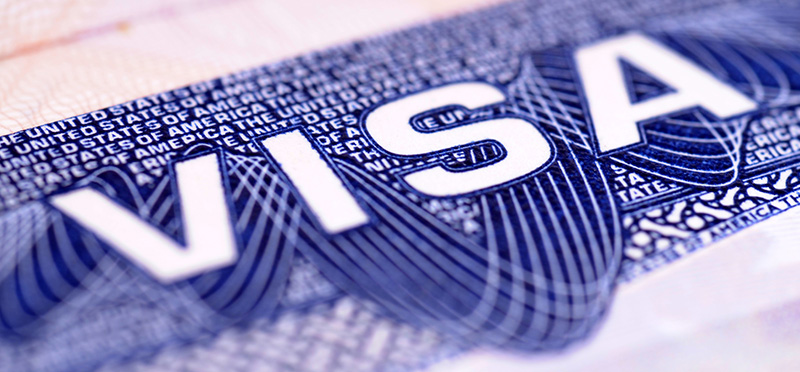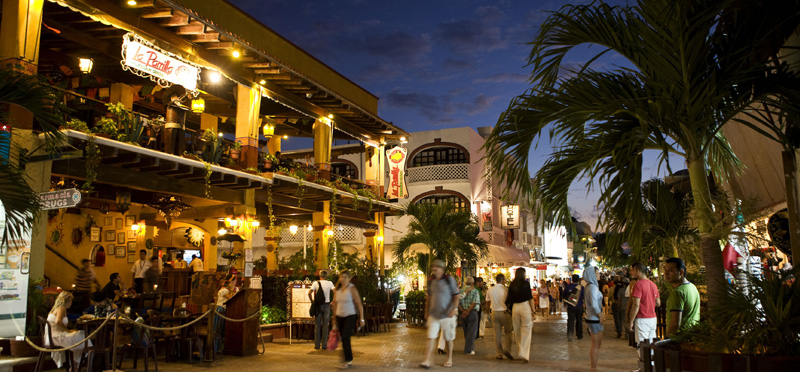- January 30, 2025
- 164
- Sin categoría
Thinking about retirement in Mexico offers a compelling proposition for those seeking vibrant culture, favorable climate, and affordable living. The process of obtaining a retirement visa, known as the “temporary resident visa,” can initially seem daunting, but it’s more straightforward with adequate preparation and documentation. This visa allows retirees to enjoy an extended stay in Mexico, experiencing the country’s beautiful beaches, rich history, and warm hospitality.
The financial requirements for obtaining a retirement visa in Mexico are designed to ensure that applicants can support themselves comfortably without seeking employment. For most applicants, demonstrating a steady monthly income from pensions or other investments is key. With the right approach, these financial conditions help retirees maintain a satisfying lifestyle throughout their stay.
Living in Mexico provides a chance to embrace a new culture while enjoying a slower pace of life at a lower cost. From bustling urban areas to peaceful seaside towns, there’s a perfect spot for every retiree. Adapting to a new environment brings opportunities for growth and enrichment, allowing retirees to enjoy their golden years in a scenic and engaging locale.

Retirement Visa Overview
A Retirement Visa, also known as a “Temporary Resident Visa for Retirees,” allows foreign nationals to live in Mexico for more than 180 days and up to four years. It’s designed for those with a steady retirement income.
Eligibility Requirements:
- Applicants must be over the age of 18.
- Proof of sufficient financial resources is necessary.
Financial Criteria:
Applicants must demonstrate a minimum monthly pension income or savings per year. The specific amount varies, so it’s essential to check the current requirements.
| Financial Source | Minimum Requirement |
|---|---|
| Monthly Pension | Varies (often indexed) |
| Yearly Savings | Varies (often 12x monthly) |
Application Process:
- Apply at a Mexican Consulate: Begin the process from a consulate outside Mexico.
- Provide Documentation: Include a valid passport, photos, and proof of financial means.
- Formal Interview: Attend an interview at the consulate.
Benefits:
- Residency card with access to local services.
- The ability to apply for permanent residency later.
This visa category is ideal for retirees seeking to enjoy Mexico’s climate and culture while retaining financial stability and access to local amenities.

Eligibility Requirements
To retire in Mexico with a visa, applicants must fulfill specific conditions. These include age, financial criteria, health insurance, and a clean background record.
Age Criteria
There is no specific age requirement set by Mexico for a retirement visa. However, most applicants tend to be of retirement age, typically 55 and older. This informal age criterion aligns with international retirement norms.
Applicants should check for any additional regulations or recommendations from their locality that might affect eligibility.
Financial Requirements
The primary feature of Mexican retirement visas (such as the Temporary Resident Visa) is financial stability. Applicants must demonstrate sufficient income or savings to support themselves.
Income Requirements:
- Proof of regular income, typically from pensions or social security.
- Monthly income should generally be around 300 times the daily Mexican minimum wage.
Asset Requirements:
- Bank statements showing significant savings, typically 5,000 times the daily minimum wage in Mexico.
Applicants should ensure documentation is clear and accurate to avoid delays.
Health Insurance Coverage
Holding health insurance is not always mandatory but is highly recommended for retired residents. Mexican health insurance can provide comprehensive coverage and peace of mind.
Several private insurance options are available, but costs and coverage should be carefully considered based on individual needs. Those already covered by an international plan should verify its validity in Mexico.
Health care cost and accessibility are appealing factors for retirees globally, making insurance a wise backup.
Background Check
A clean criminal background is essential. Applicants must provide a police clearance certificate from their home country.
This certificate should highlight any past convictions, arrests, or pending charges to be evaluated during the visa process. The background check ensures safety and security for all residents within Mexico.
Ensuring the document is up-to-date and translated into Spanish, if required, can facilitate a smoother application process.

Types of Retirement Visas
For retirees considering a move to Mexico, understanding the differences between the Temporary Resident Visa and the Permanent Resident Visa is essential. Each option offers distinct benefits and obligations to potential applicants.
Temporary Resident Visa
The Temporary Resident Visa is suitable for those who plan to reside in Mexico for more than six months but less than four years. It requires proof of sufficient financial resources or regular income. Applicants should prepare the necessary documents before applying, including bank statements and income proof.
This visa must be renewed annually and can be converted to a Permanent Resident Visa after four consecutive years. Many find it beneficial for assessing long-term plans in Mexico without immediate commitment. The application process generally takes place at a Mexican consulate outside the country. Each consulate may have varying requirements, so applicants should confirm specifics beforehand.
Permanent Resident Visa
The Permanent Resident Visa is designed for those looking to live in Mexico without time constraints. It requires applicants to demonstrate higher financial resources compared to the Temporary Resident Visa. Additionally, it is intended for retirees who meet age and/or financial criteria.
This visa grants the holder many privileges, including the right to work and access to social services. Unlike the Temporary Resident Visa, it does not require renewal and affords permanent residency rights in Mexico. Typically, individuals apply for this visa directly at a Mexican consulate. Successful applicants must show documentation such as investments, pensions, or savings meeting set financial thresholds.

Application Process
Applying for a retirement visa in Mexico involves several key steps. These steps include collecting important documents, submitting the visa application, and attending an interview for approval.
Gathering Documentation
Applicants need to assemble specific documents to support their retirement visa application. Essential items include a valid passport, proof of income, and recent photographs.
Proof of sufficient financial resources is vital. Applicants must show bank statements or pension details confirming a regular income that meets or exceeds the required threshold by Mexican authorities. This ensures the applicant can support themselves financially while living in Mexico.
Additional documentation may include medical insurance and proof of accommodation. Preparing all documents in advance and checking for any additional local embassy requirements is recommended.
Visa Application Submission
Submitting the application is a critical step that ensures the process is set in motion. Applicants are typically required to file their application at a Mexican consulate in their home country.
Include all prepared documents with the application form. Double-check to ensure all necessary papers are complete and accurate.
It is advisable to schedule an appointment with the consulate to avoid unnecessary waiting times. Some consulates may allow online submissions; checking with the particular consulate is recommended for detailed procedures.
Interview and Approval
The interview is a crucial component of the application process. During this session, consular officers assess the applicant’s eligibility and verify the documentation.
Applicants must attend the interview at the designated Mexican consulate. During the meeting, officers may ask for additional clarifications about the applicant’s financial and personal circumstances.
Following the interview, a decision is made regarding approval. If successful, the applicant will receive their visa, typically valid for a specified duration, allowing entry into Mexico for retirement.

Renewal and Validity
For those seeking to continue their stay in Mexico, understanding the processes involved in renewing temporary visas and the terms of permanent visas is essential. It’s crucial to comply with timelines and requirements to maintain legal residency.
Temporary Visa Renewals
Temporary resident visas are initially granted for a maximum duration of one year. They can be renewed subsequently for one to three years, reaching up to a total of four years. Renewal applications must be submitted at least 30 days before the current visa expires.
To renew, residents need to prove financial stability through bank statements or a pension, meet required health standards, and submit their renewal application through the Instituto Nacional de Migración (INM). Appointment scheduling and specific documentation may vary, so checking with a local Mexican consulate is advisable.
Permanent Visa Terms
Permanent residency visas provide indefinite stay privileges. Individuals with a temporary visa of four years, retirees with a qualifying pension, or those with close Mexican family ties, are eligible to apply. This visa requires proof of stable income or significant savings and personal identification documents.
Once granted, permanent residents can work without restrictions, receive Mexican health benefits, and enjoy other local advantages. Unlike temporary visas, permanent visas do not require renewal, providing long-term security for residents. However, it’s essential for permanent residents to notify INM about changes such as address or marital status.

Rights and Limitations
In Mexico, some rights and restrictions apply to individuals holding a retirement visa. These aspects involve working permissions, property rights, and access to public services.
Right to Work
Retirement visa holders in Mexico typically do not have the inherent right to work. This visa is intended for those who are financially self-sufficient and wish to spend their retirement in the country. Individuals must obtain a separate visa or permit if they choose to engage in employment or business activities.
Seeking employment without proper authorization may result in legal challenges and potential fines. It is essential for retirees who wish to work to consult with Mexican immigration authorities or legal experts to ensure compliance with all regulations.
Property Ownership
Foreign retirees can own property in Mexico, with some limitations near coastlines and borders. A fideicomiso (trust) is often required as foreign ownership is restricted within 50 kilometers of the coastline and 100 kilometers from international borders.
This trust is typically established with a Mexican bank, allowing foreigners to enjoy rights similar to full ownership. They can lease, sell, or transfer the property, although some fees and administrative procedures are involved in the process.
Access to Public Services
Retirement visa holders can access some public services in Mexico, including healthcare. However, access varies depending on location and specific services. Public healthcare is available, though private healthcare services are often preferred due to shorter wait times and the availability of specialized care.
Eligibility for some social services, such as pensions or subsidies, might be limited based on residency and other legal considerations. Retirees are advised to evaluate both public and private options to ensure they receive the needed services.

Costs and Fees
When considering a retirement visa for Mexico, it’s important to keep an eye on the costs involved. The primary fee to consider is the visa application fee, which typically ranges around $36 USD.
Additional costs include the requirement to demonstrate financial solvency. Applicants need to show proof of monthly income, which varies based on exchange rates but often falls between $2,000 – $2,500 USD. Alternatively, applicants can meet the financial requirement with proof of savings, usually over $100,000 USD.
A budget for legal assistance is also advisable, as navigating visa requirements can be complex. Hiring an immigration attorney or consultant might cost between $500 – $1,000 USD depending on the level of service needed.
Renewal fees are another consideration. Temporary resident visas generally need renewal annually for up to four years before transitioning to permanent residency. Renewal costs are approximately $150 USD annually.
It’s essential for applicants to account for potential additional expenses. These may include translation costs and apostille services for document authentication, ranging from $10 – $100 USD per document.
Understanding these costs helps ensure that applicants are financially prepared for the process and can avoid unexpected expenses.

Tax Considerations
Individuals retiring in Mexico should be aware of the tax implications. Residency status plays a key role in determining tax liability. A person is typically considered a tax resident if they establish their primary economic interests in Mexico.
Income Tax
Tax residents are subject to income tax on worldwide income. Non-residents only pay tax on Mexican-sourced income. The rates may vary based on the individual’s residency status and the types of income received.
Double Taxation Avoidance
Mexico has treaties with several countries, including the United States and Canada, to avoid double taxation. These treaties help ensure that one’s income is not taxed by more than one country.
Property Taxes
Foreign retirees purchasing property in Mexico need to consider annual property taxes, known as Predial. These taxes vary depending on the property’s location and value.
Social Security and Pensions
Social Security benefits from the U.S. are not taxed in Mexico. However, private pensions may be subject to Mexican income tax. Retirees should consult with tax professionals to understand specific obligations.
Tax Filing Requirements
Mexican residents must file an annual tax return. It’s crucial to keep track of income, deductions, and credits. Assistance from a tax advisor familiar with both Mexican and home country tax systems is often beneficial.
Understanding these considerations helps retirees effectively plan their finances while enjoying a comfortable life in Mexico.

Living in Mexico
Mexico offers a vibrant lifestyle for retirees, blending culture, affordable living, and reliable healthcare. Communities are welcoming and diverse, creating a comfortable setting for expatriates.
Cost of Living
The cost of living in Mexico is often significantly lower than in many Western countries. Housing expenses can vary, with options ranging from modest apartments to luxurious homes. Groceries and other essentials are generally affordable, with local markets offering fresh produce at competitive prices. Utilities and services are also economical, making it easier to maintain a comfortable lifestyle.
Many retirees find that their money goes further. Dining out is inexpensive; a meal at a local restaurant typically costs less than in the U.S. Public transportation is affordable and widely accessible, adding to the ease of living in Mexico.
Healthcare Services
Mexico provides accessible healthcare options that are appealing to many retirees. Public healthcare services are available through the IMSS and Seguro Popular systems, offering basic medical care at low costs. For those who prefer private healthcare, numerous private hospitals and clinics offer quality services.
The cost of private healthcare is still lower than in many Western countries. Additionally, many doctors in Mexico are trained internationally and speak English, which is reassuring for expatriates. Pharmacies are conveniently located and offer medications at reasonable prices without the need for prescriptions in many cases.
Community and Lifestyle
The community life in Mexico is enriching, with many expat-friendly towns such as San Miguel de Allende and Ajijic. These areas boast active social lives with clubs, activities, and events designed for retirees. Cultural festivals and local traditions provide immersive experiences that residents can enjoy year-round.
Safety varies by region, so choosing the right place is crucial. Many retirees find comfort in the tight-knit communities that offer support and companionship. Learning Spanish can greatly enhance the living experience, though many locals speak English, particularly in popular areas. These elements come together to create a fulfilling lifestyle in Mexico.

Legal Representation and Assistance
When applying for a retirement visa in Mexico, many individuals find it beneficial to seek legal representation. Lawyers specializing in immigration can provide guidance through the complexities of immigration laws, ensuring compliance with local regulations.
Bilingual legal assistance is often recommended. It eases communication barriers and minimizes misunderstandings. Providing clear advice, they can help navigate the often intricate application processes.
Legal representatives can assist in document verification. They ensure all the necessary paperwork is correctly completed and submitted on time, reducing the risk of application delays or rejections.
For those unfamiliar with local legal requirements, retaining a legal advisor with expertise in Mexican immigration law can be invaluable. Engaging such services not only offers peace of mind but also streamlines the process, making it less daunting for applicants.

Preparation for Moving
Moving to Mexico on a retirement visa requires careful planning. Choosing the Right Location is crucial. Retirees should consider weather, cost of living, and community preferences when selecting a place to settle.
Organizing Important Documents is essential. Ensure passports, visas, and identification records are up-to-date. A checklist can help keep track of what’s necessary.
A Healthcare Plan is vital. Research local healthcare providers and insurance options. Knowing nearby hospitals and clinics can provide peace of mind.
Creating a Financial Plan is important. It’s beneficial to understand the exchange rate, banking options, and tax implications. Setting up a local bank account can simplify finances.
Downsizing Possessions can ease the move. Decide what to take and what to leave behind. Shipping and storage options should be explored for items not making the journey.
Understanding Cultural Differences helps in adjusting smoothly. Learning basic Spanish phrases and customs fosters better integration into local life.
Lastly, ensure Communication with family and friends remains open. Setting up a reliable phone plan and internet service keeps connections strong.
Summary: Proper preparation involves a mix of logistics and adaptability. Focus on planning and researching to make the transition smoother.

Frequently Asked Questions
Obtaining a retirement visa in Mexico involves specific financial and age requirements. Detailed steps are available for applying, particularly for US citizens interested in residency options.
Applicants must demonstrate an income sufficient to meet Mexico’s economic solvency criteria. This often includes presenting bank statements showing a monthly income or savings balances over a required threshold.
Mexico does not specify a minimum age for the retirement visa, but applicants typically need to provide proof of pension or retirement income.
Applicants typically start the process at a Mexican consulate or embassy in their home country. Necessary documentation includes proof of economic solvency, identification, and possibly evidence of residence in the applicant’s home country.
Begin the application at a Mexican consulate with necessary documentation such as proof of financial resources and identification. Once approved, the applicant must finalize the process in Mexico, typically within 30 days.
US citizens need to provide proof of financial solvency, valid identification, and may need to capture biometric data. Health insurance is highly recommended, though not always mandatory.
The specific amount varies, but typically applicants must show proof of a monthly income that meets the minimum financial threshold set by Mexican immigration authorities. This is often outlined in local currency, adjusted annually.










